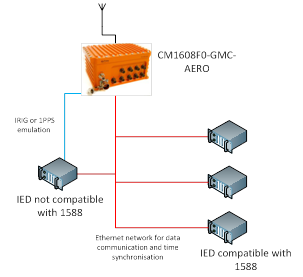

›› Rugged Ethernet and Timing Solutions



Modern time synchronization systems are based on the Precisions Time Protocol (PTP) according to the IEEE 1588 standard. PTP replaces dedicated time synchronization lines used for distribution of GPS data and IRIG-B.
The PTP Ground Master Clock of a network is the common time base source for all PTP Slave Clocks within the network. All Master Clock candidates are referred to as Ordinary Clocks and the best Ordinary Clock is selected as the Grand Master Clock based on the Best Master Clock Algorithm. All Ordinary Clocks not selected remain passive and can only enter Master Clock state if the chosen Grand Master Clock is removed from the network or is no longer the best candidate.
The switches in a PTP network should have PTP Transparent Clock support. Time synchronization packets forwarded through a switch with PTP Transparent Clock support will not suffer from variable switch latency. The switches in the network should have Slave Clock support, meaning they are synchronized with the PTP Slave Clock end devices to the same Grand Master Clock. A switch on the edge of the network can then provide non-PTP interfaces with time synchronization output signals such as IRIG-B (DC and AM) or GPS emulation (i.e. 1PPS and NMEA telegrams) in order to distribute time to non-PTP end devices

